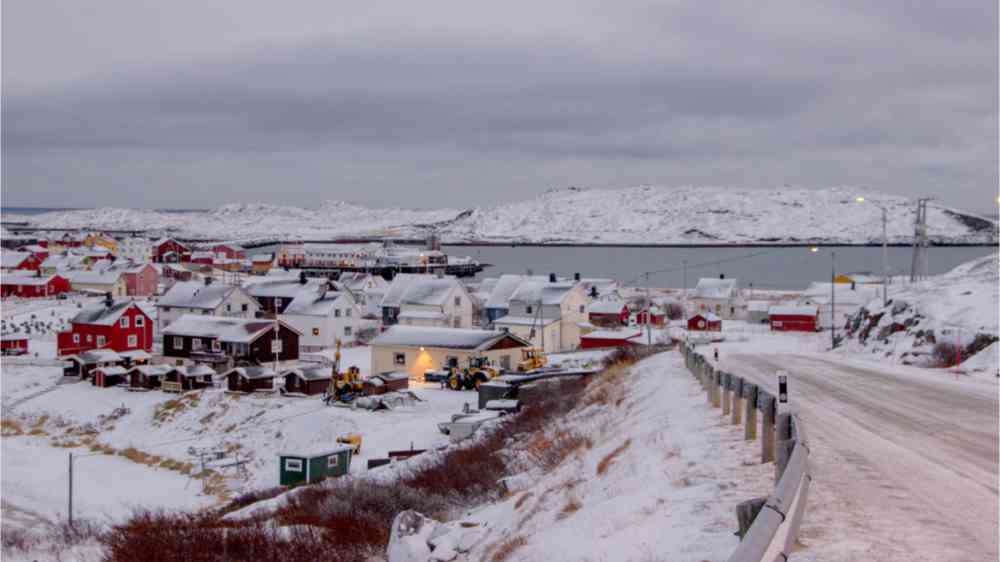Could AI be useful for Arctic communities facing sea ice loss?

The forecasting tool IceNet promises to be a useful tool for evaluating sea ice loss in the Arctic. But ethical and logistic considerations have to be taken before scientific and Indigenous communities start working together.
For the past decade, annual average warming in the Arctic has doubled the global mean. The extent of sea ice is half of what it was 42 years ago. Scientific models warn that the Arctic Ocean will be seasonally ice free within the next 30–50 years.
Because it is a crucial region for hunting and fishing, the loss of Arctic sea ice puts Indigenous communities’ food security and sovereignty at risk.
Bobby Schaeffer started noticing these changes in the summer of 1968, when his father began taking him to hunt seals after school. He remembers that every season, hunters had to be much more careful while walking through the ice: It was shrinking and getting thinner.
Schaeffer, from the Native Village of Kotzebue in Alaska, said although the formation of sea ice used to start in mid-September, it now starts in November, December, or sometimes even as late as January, reducing the opportunity for hunters to bring food back home.
But hunters have adapted to changes, combining Indigenous Knowledges and skills with such tools as GPS and satellite imagery to see where the ice is located and the kind of openings it has. This knowledge allows the hunters to better plan expeditions and maximize their opportunities.
Even so, rapid sea ice loss and other ecological changes are outpacing the response capacity of Arctic communities and scientists. The challenge is now to “react—often weekly, daily sometimes, even on a moment,” said Tero Mustonen, president of the Snowchange Cooperative. (The Snowchange Cooperative, based in Finland, was founded to create a platform for scientists and Indigenous communities across the Arctic to discuss regionally sensitive climate issues.)
Artificial Intelligence
Using satellite images to help forecast sea ice change has been one of the scientific community’s key responses in addressing risks associated with sea ice loss. The tools for such forecasting are sophisticated, but the complexity of atmosphere-ocean interactions makes it hard to accurately predict what will happen beyond 1 month.
In response, scientists from the British Antarctic Survey (BAS), led by data scientist Tom Andersson, developed an artificial intelligence (AI) forecasting tool capable of predicting the presence of sea ice from 1 to 6 months in the future. It’s called IceNet. In contrast to other approaches, which need supercomputers to work, IceNet can be run on a laptop in a matter of seconds.
By using climate simulations covering the years 1850–2100 and satellite data on sea ice from 1979 to 2011, IceNet learned and predicted sea ice change with 95% accuracy, reported the authors in Nature Communications.
Although most forecasting technologies have been used for shipping and commercial purposes, Andersson explained, his team wanted to “turn that discourse,” putting IceNet at the service of communities and Arctic ecosystem conservation groups. “Mass fishing, oil, gas, or any neocolonial exploitative industries are not on our interest list,” he said.
The group is now working on a version of IceNet capable of being used as a daily weather forecast, Andersson said.
Listen, Consent, Partner
But local scientists from Alaska, such as Alex Whiting, think that several concerns have to be taken into consideration regarding new science technologies and the way scientists work with communities. Whiting is the coordinator of Kotzebue’s Environmental Program.
One problem, Whiting explained, is finding tools that are useful when taking into account that many communities lack Internet and phone signals. Indigenous communities are also concerned with preventing parachute science (sometimes called helicopter research) that does not include Indigenous leadership of projects. “It’s not that people are resistant to technology. It’s that technology is not a substitute for Indigenous Knowledge,” he said.
Mustonen agreed. For outside scientists, “step one is to listen, step two is having consent to collaborate…and maybe, step three then becomes a successful partnership.”
Although the BAS team is still working on the last phase of IceNet, Andersson said they’re trying to develop an easy-to-use tool with no need for a strong Internet signal. They are also trying to have face-to-face discussions with interested communities to adapt the technology to their priorities.
For his part, Bobby Schaeffer welcomes every respectful approach to coworking to address climate change in Kotzebue. “We’ve been observing this for a while, we’re all living in this world together, and if we don’t make our move to reverse climate change, we’re pretty much toast. We’re gone,” he concluded.